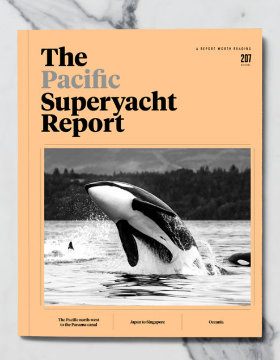Company Description
Dykstra Naval Architects (DNA) has over 40 years’ experience in the design, redesign, naval architecture and marine engineering of classic and modern performance yachts, and it offers preliminary and concept designs for pleasure and commercially operated yachts.
Founded in 1969 by Gerard Dykstra and led by managing director Thys Nikkels, the award-winning team at Dykstra Naval Architects is made up of passionate sailors that sail their designs and redesigns, using first-hand experience combined with software developed in-house to provide expertise in spars, rigs, and structural analysis.
“ I took over the office in 2004, I inherited a very solid foundation. Gerard liked to investigate and research new technologies or materials, and although we build on previous experience we make a conscious effort not to repeat what has come before.”
— Nikkels
List of core services:
• Naval architecture and design
• Exterior styling
• Refit / rebuild design
• Marine engineering
• Interior design
Personality
Q: How did you become a superyacht designer and what or who inspired you into the industry?
I was lucky when Gerard Dykstra hired me fresh from college in 1991. Seven years later, and with retirement in mind, he then invited me to become a partner with a view to taking over the firm, which happened in 2004. I couldn’ have asked for better on- the-job training!
Q: Of the projects you’ worked on, which was your most challenging and why?
They have all been challenging, but in terms of raising the profile of Dykstra Naval Architects, Maltese Falcon and her iconic Dynarig was very important and ultimately led to 110m Project Solar with Oceanco. Project Solar is a much bigger yacht, but the same free-standing, rotating carbon masts with in-mast furling sails fully supported by purpose-designed curved yards (meaning no shrouds or sheets to obstruct decks) have been applied. The difference is that the Oceanco yacht is designed from scratch to carry a Dynarig, whereas the Maltese Falcon was based on a pre-existing hull.
Q: How do you go about understanding a client and their wishes for a project?
You have to balance what the owner might want to do with what they can do. It’ not just about pure sailing there’ also the lifestyle aspect, crew considerations, and the fact that these big boats spend a lot of time motoring. So part of our job is educating our clients and managing their expectations.































